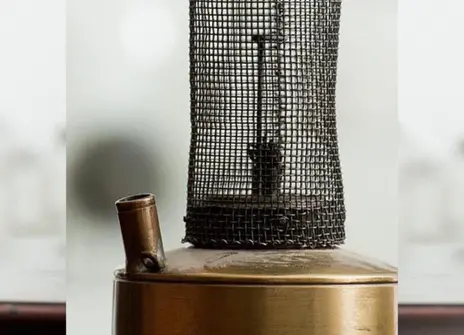The fact that sodium could have been named Sodarchium, the moment when self-experimentation revealed nitrous oxide alleviated pain, and the pioneering 19th Century scientist whose contribution to the mining industry saved countless lives felt his invention was under-appreciated.
These are just some of the new insights discovered when over 13,000 pages of scientific notebooks handwritten by Humphry Davy – an early Director of the Royal Institution and inventor of the Miners’ Safety Lamp – were transcribed by members of the public through a mass participation project.
It is the first time that the innermost thoughts and feelings of one of history’s greatest scientists have been made available publicly, 200 years after they were first written.
As a result of the transcription, 129 Davy’s notebooks and individual lecture notes – 124 of which are preserved in the Ri’s internationally significant heritage collection in London – are now digitised and freely available online. In all, the significant digital collection, supplemented by over 4,500 additional explanatory notes contributed by the volunteer transcribers, represents a treasure trove of information for researchers seeking detailed insight into the mind of Davy, the early nineteenth century’s “foremost man of science,” as well as the scientific process employed during the Georgian era.
Davy Notebooks project leader, Prof Sharon Ruston at Lancaster University, said: “These notebooks, images of the pages, their transcription and explanatory notes have enabled us to make important advances in Davy scholarship since the first transcription in 2019. A major finding of the project, revealed just earlier this year, was the discovery of previously unseen poetry by the chemist.
“We are indebted to the thousands of volunteers who have made this work possible, giving so freely and generously of their time and knowledge and playing such a key role in this significant history of science and literature research project.”
Katherine Mathieson, Director of the Royal Institution, said: “The Ri has a rich heritage of scientific discovery, and interpreting our collection for future study and enjoyment enables wider and deeper public access, while communicating our continuous traditions of discovery and engagement.
“So we are delighted that this ambitious project preserves the innermost thoughts of this great scientist on behalf of the nation, and makes important insights into his methods available to researchers around the world.”
The £1 million mass transcription project to decipher Davy’s notoriously difficult to read handwriting revealed that Davy – who was friendly with the great Romantic poets of the day – was an accomplished poet himself, often composing verse alongside his recordings of scientific exploration.
Also revealed were Davy’s notes for his famous public lectures as a science communicator at the Royal Institution, indicating when he would have demonstrated his point with a live experiment; details of his first experiments on nitrous oxide or ‘laughing gas’ in 1799, including a note that the gas helped alleviate pain; and more mundane records such as Davy’s reading lists, his shopping lists, scurrilous gossip about his contemporaries, and accounts of his travels in Europe and sporting pursuits.
The project was led by Lancaster University in partnership with the University of Manchester, UCL and the Royal Institution. It was generously funded by the Arts and Humanities Research Council.
Launched at an event during Lancaster’s prestigious LitFest on Saturday (12 October) the digital collection of Davy’s notebooks is available via Lancaster University Library’s Lancaster Digital Collections platform.

